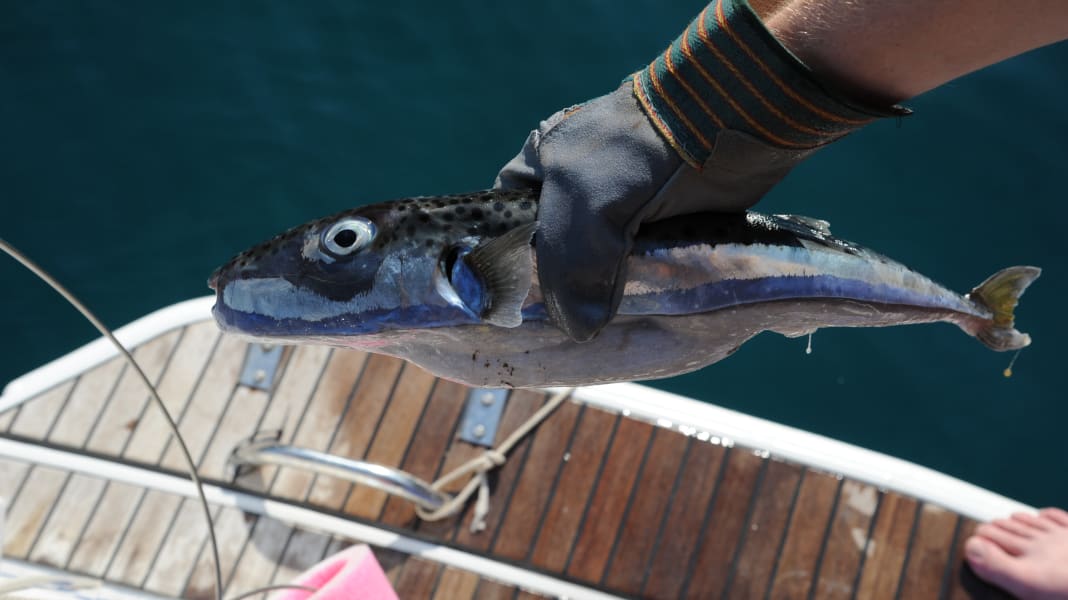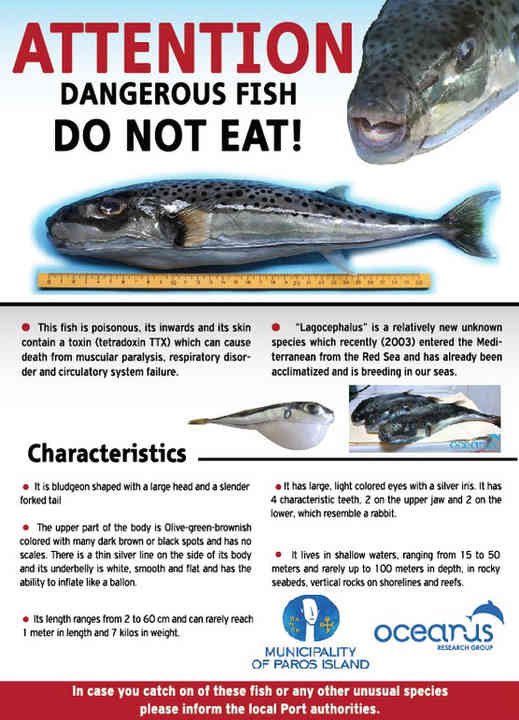Croatia: Deadly pufferfish species continues to spread in the Mediterranean

After becoming a real plague in Turkey and Greece, where it also caused the first deaths among amateur anglers, the first specimens were caught by fishermen off the island of Dugi Otok last year. Until then, it was thought that the Adriatic was too cold for the species in winter, but this is apparently no longer the case. In May of this year, another fisherman netted seven specimens off the island of Ceja in the Bay of Medulin. Pufferfish have also been spotted off the coasts of Italy and Spain.
Pufferfish has become a plague
The fish has been such a problem in Turkey for some time that the authorities have been paying a premium for every fish delivered to the authorities since 2021. The problem is the spread of the fish, which measures up to 70 centimetres and weighs 7 kilos. Introduced via the Red Sea by commercial vessels, it has hardly any natural enemies in the Mediterranean. This leads to unchecked reproduction. The problem for fishermen is that the harehead puffer fish likes to eat their catch directly out of the nets. It has four large, very powerful incisors, to which it owes its name. It uses them to bite through the meshes of the nets.
How to recognise a pufferfish

How dangerous the pufferfish is for humans
The tricky thing about the fish for humans is that it cannot assume the spherical shape in the air, so only a few laypeople identify it when fishing from a boat, for example. In Greece, information posters in many harbour offices now warn of the animal, usually the so-called hare's head pufferfish. The animal produces a highly toxic neurotoxin that does not break down even when heated during cooking or frying and leads to respiratory arrest. Its skin, which can contain traces of the toxin, is also dangerous. Anyone who removes it from a fishing rod with their bare hands, for example, can suffer the first signs of poisoning. Crews fishing from on board should therefore wear gloves when removing fish from the hook.
Pufferfish can be eaten, but only if it has been prepared by professionals. In Japan, for example, only trained and certified chefs are allowed to do this. It is therefore strongly advised not to prepare pufferfish yourself.
The pufferfish is relatively easy to recognise by its snout: it is almost boxy and has four massive incisors. There are also strangely large, flabby folds of skin on the underside, which are ultimately used to create a ball in the water, which either repels enemies or prevents it from being swallowed. However, the only predators are large octopuses and some shark species.
